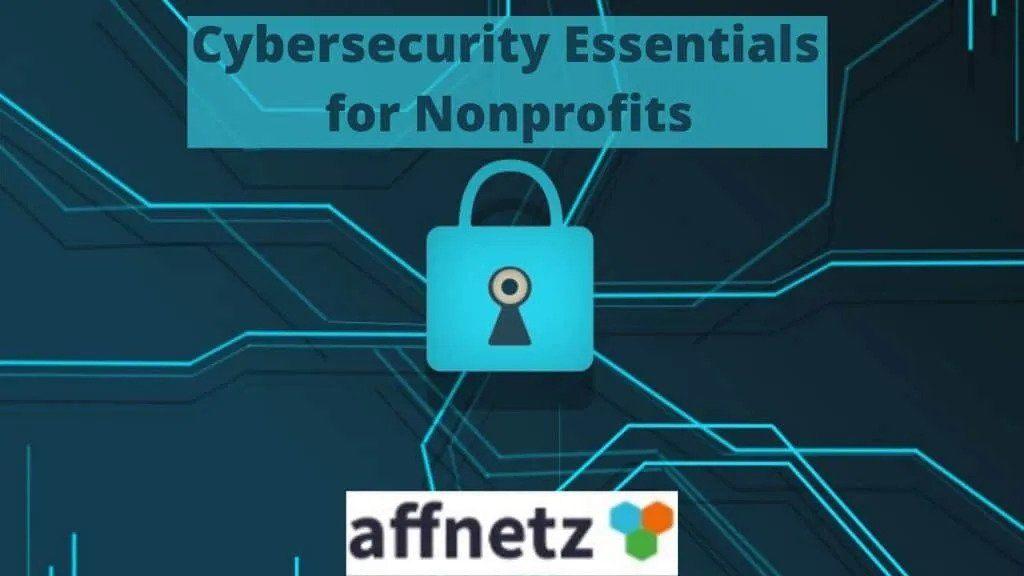How to Calculate Donor Retention Rate? / By Bala Guntipalli
How To Calculate Donor Retention Rate?
When it comes to nonprofit fundraising, it’s not just about getting new donors. It’s also crucial to maintain and build relationships with existing supporters. One important question in this process is: How do we calculate donor retention rate? This metric holds the key to sustainable growth and impact for nonprofits.
In this article, we will explain what donor retention rate means, why it matters, and provide strategies to improve it. Understanding and implementing these practices can help nonprofits boost their fundraising efforts and ensure long-term success.
This blog offers the process of How to Calculate Donor Retention Rate for your Organization.
In this blog We’ll cover the following:
- The Importance of Donor Retention
- Strategies to Improve Donor Retention
- How to Calculate Donor Retention Rate: A Step-by-Step Guide
- Challenges and Solutions in Calculating Donor Retention
- Tools and Resources for Tracking Donor Retention
The Importance of Donor Retention :
Donor retention is key to sustainable fundraising for nonprofits. It’s not only about acquiring new donors but also about retaining those that have already been acquired.
Analyzing donor retention rates over a seven-year period reveals fluctuations tied to economic conditions, with a dip during the recession years of 2008 and 2009, followed by a recent stabilization.
In contrast, broader philanthropy surveys, such as Giving USA, show declines in 2009, with subsequent increases in later years. These trends show the challenge of donor retention. No matter the economic situation, calculating the donor retention rate allows us to see how well we are keeping them over long periods of time. To stabilize and receive backing from society during good or bad economic times, organizations should work towards involvement and commitment from former donors.
Definition and Calculation:
Donor retention rate measures the percentage of donors who continue to support an organization over a specific period, typically from year to year. Calculating this rate involves dividing the number of donors who contribute in both the current and previous periods by the total number of donors in the previous period. The resulting percentage reflects the proportion of donors retained by the Nonprofit.
Benchmarking:
Benchmarking donor retention rates against industry standards helps nonprofits can compare their retention rates with sector averages.Understanding where one stands in relation to industry benchmarks offers context for setting realistic goals and refining fundraising strategies.
Importance of Donor Retention for Nonprofits:
Donor retention is more than just a metric; it’s a cornerstone of sustainable fundraising. Retaining donors is vital for maintaining a stable revenue stream and ensuring the long-term viability of nonprofit programs.
Unlike acquiring new donors, which often incurs higher costs, retaining existing donors is generally more cost-effective and yields greater returns over time. Moreover, loyal donors are more likely to increase their giving and advocacy, which grows the impact within the community.
Improving donor retention can significantly impact giving rates for educational institutions. For example, a Donor Retention study conducted at a mid-sized university revealed that by analyzing lifetime giving and predicting donation amounts, the institution increased its giving rate to 34 percent among alumni. This approach provided actionable data for targeted outreach efforts and yielded valuable insights for fundraising strategies.
Donor retention rate serves as a barometer of organizational health and effectiveness in donor relations. By understanding how to calculate donor retention rate and interpret this metric, nonprofits can prioritize strategies that nurture donor loyalty, drive revenue stability, and ultimately, further their mission-driven objectives.
Strategies to Improve Donor Retention:
Donor retention isn’t just about maintaining numbers; it’s about nurturing meaningful relationships that inspire continued support. Let’s discuss actionable strategies to enhance donor retention and cultivate long-lasting connections with supporters.
First-Time Donor Program:
Don’t overlook the incredible value of implementing a first-time donor program.
A good CRM will help you identify and track new donors and should be able to help you set up an automated workflow to provide multiple ‘touches’ to first-time donors.
A first step should be to immediately acknowledge the donation with an email and tax receipt. But then you can put your CRM to work for you and have it assign you the task of writing a handwritten thank you letter or thoughtful email a week later.
Then an automated set of two or three emails can be staggered over the next two to three months to thank first-time donors again – this time under the signature of your Executive Director and then a beneficiary of your Nonprofit.
But don’t simply rely on automation. Time permitting, it’s helpful if your Executive Director can make phone calls to new donors too. Some Executive Directors I know spend two hours every Friday taking time to reach out to donors in a personal manner.
Authenticity is just as essential in retaining donors as it is in acquiring first-time donors.
Personalization is key to fostering donor loyalty. By tailoring communications to individual preferences and interests, nonprofits can create a more meaningful connection with donors.
Impact Storytelling:
Hopefully, you’re having conversations with your donors and seeking to uncover their motivational triggers for giving to your Nonprofit. For example, they might have had a tough childhood and know the value your Nonprofit brings to at-risk students who need a caring adult as a mentor. Their company could be very involved in your Nonprofit, or they like the advocacy efforts of your Nonprofit toward public education funding, or perhaps they simply have many friends that are also donors to your Nonprofit.
Identifying a donor’s motivational triggers and then segmenting your communications to donors based on their deepest interest is essential to keeping a donor’s attention. A targeted and responsive message is much more effective than a ‘one-size-fits-all’ message.
Humans are wired to respond to stories, especially those that evoke emotion and illustrate tangible outcomes. Sharing success stories and showcasing the real-world impact of donors’ contributions can be a powerful way to engage supporters.
By highlighting the difference their donations make in the lives of beneficiaries, nonprofits can inspire donors to continue their support and become advocates for the cause.
Seamless Donation Process:
A seamless donation experience is essential for retaining donors. An intuitive, user-friendly donation process, including online platforms with mobile compatibility, can significantly enhance the donor experience. Simplifying the donation process reduces friction and makes it easier for donors to support the organization, increasing the likelihood of repeat giving.
Monthly Donor Program:
Encourage donors to join your Nonprofit’s monthly donor program. Monthly donors make a 35 to 40% higher annual contribution to Nonprofits than do one-time donors. If you don’t yet have a monthly donor program, you should launch one as soon as possible.
With a monthly donor program, your retention is built-in (save for expiring credit cards and donors changing banks, etc.). That is, a donor’s inaction actually works in your Nonprofit’s favor, as their gifts are automatically deducted from the donor’s credit card each month.
Volunteer Opportunities:
Offering volunteer opportunities provides donors with a hands-on way to support the organization’s mission beyond financial contributions. Volunteering not only deepens donors’ engagement but also strengthens their connection to the cause by allowing them to actively participate in making a difference.
By involving donors in meaningful volunteer activities, nonprofits can cultivate a sense of ownership and investment in the organization’s success.
Events and Community Involvement:
Organizing events and involving donors in community initiatives are effective ways to foster a sense of belonging and shared purpose. Whether it’s hosting fundraising events, community service projects, or networking opportunities, engaging donors in offline activities strengthens relationships and creates a sense of community.
By implementing these strategies, nonprofits can not only improve donor retention rates but also build a loyal supporter base that is deeply committed to advancing their cause.
How To Calculate Donor Retention Rate: A Step-by-Step Guide:

Understanding how to calculate donor retention rate is essential for nonprofits aiming to assess their donor retention efforts and identify areas for improvement. In this section, we’ll provide a step-by-step guide on how to calculate donor retention rate, along with a general formula for reference.
Step 1: Determine the Time Period
First, decide on the time period for which you want to calculate donor retention. This period could be a year, quarter, month, or any other timeframe that aligns with your organization’s reporting and analysis needs.
Step 2: Define your Donor Cohorts
Next, divide your donor base into cohorts based on the time period. For example, if you’re calculating donor retention on an annual basis, you’ll have two cohorts: donors from the previous year and donors from the current year.
Step 3: Count the Number of Donors from Previous Period
Count the number of donors who contributed during the previous period (e.g., the previous year). This will serve as your baseline for measuring donor retention. (P.S.: Your software should be able to do this!)
Step 4: Determine the Number of Retained Donors
Now, identify the donors from the previous period who also contributed during the current period. These are your retained donors – those who continue to support your organization over time.
Step 5: Calculate Donor Retention Rate
Finally, use the following formula to calculate donor retention rate:
{Donor Retention Rate = {Number of Retained Donors/ Number of Donors from Previous Period} times(x) 100%
Multiply the result by 100 to express the retention rate as a percentage.
Example Calculation:
Let’s say you had 500 donors in the previous year and 350 of them continued to support your organization in the current year. To calculate donor retention rate:
Donor Retention Rate = {350}/{500} times(x) 100% = 70%
Interpretation:
In this example, the donor retention rate is 70%, indicating that 70% of donors from the previous year continued to support the organization in the current year. This metric provides insights into the organization’s ability to retain donors over time and serves as a key indicator of donor loyalty and engagement.
By following these steps and formula, nonprofits can accurately calculate donor retention rate and use this valuable metric to inform their fundraising strategies, cultivate donor relationships, and drive sustainable growth.
Challenges and Solutions in Calculating Donor Retention:
Data Accuracy:
One of the primary challenges in calculating donor retention rates is ensuring the accuracy and integrity of the data used in the analysis. Common issues such as duplicate records, incomplete information, and outdated contact details can skew the results and undermine the reliability of retention metrics.
To address this challenge, nonprofits should prioritize data hygiene practices, including regular data cleaning, deduplication, and validation processes. Implementing robust data management protocols and investing in CRM systems with built-in data validation features can help maintain data accuracy and ensure the integrity of donor retention calculations.
Analysis Complexity:
Analyzing donor data can be a complex and time-consuming process, especially for organizations with large donor databases. The sheer volume of data, coupled with the need to identify trends, patterns, and correlations, can overwhelm nonprofit staff and hinder effective decision-making.
To simplify the analysis process, nonprofits can leverage segmentation techniques to divide their donor base into distinct groups based on characteristics such as giving history, engagement level, and demographic attributes.
By segmenting donors, organizations can tailor their retention strategies more effectively and focus their efforts on the donors most likely to respond positively. Additionally, automating data analysis tasks using advanced analytics tools and software can streamline the process, allowing nonprofits to derive actionable insights more efficiently and drive informed decision-making.
Tools and Resources for Tracking Donor Retention:
To effectively measure donor retention rates, nonprofits need tools that make it easy to track donor interactions and implement the right strategies. In this section, we’ll discuss the role of donor management software and recommend platforms suitable for nonprofits of all sizes.
Features and Benefits
Donor management software is a valuable tool for nonprofits seeking to enhance their donor retention efforts. These platforms offer a wide range of features designed to streamline donor tracking, engagement, and stewardship processes.
From maintaining comprehensive donor profiles to tracking donation history and communication preferences, donor management software provides nonprofits with the insights and tools they need to build and maintain meaningful relationships with their supporters.
Some key features of donor management software include:
- Donor Profiles: Centralized databases that store detailed information about donors, including contact details, giving history, and engagement preferences.
- Communication Tools: Email marketing, segmentation, and automation capabilities to personalize communications and nurture donor relationships.
- Reporting and Analytics: Tools for tracking key metrics, analyzing trends, and identifying opportunities to improve donor retention rates.
- Integration with Fundraising Platforms: Seamless integration with online fundraising platforms and payment processors to streamline donation processing and tracking.
By leveraging these features, nonprofits can gain a deeper understanding of their donor base, tailor their communication strategies, and implement targeted retention initiatives to increase donor loyalty and support.
Conclusion:
In conclusion, donor retention rate is a critical metric that plays a central role in nonprofit sustainability and fundraising success.
By measuring the percentage of donors who continue to support an organization over time, nonprofits can assess their effectiveness in donor stewardship and identify opportunities to strengthen donor relationships.
A high donor retention rate not only indicates donor loyalty and engagement but also contributes to revenue stability and program sustainability.
Looking ahead, the landscape of donor engagement and retention is continuously evolving, driven by changing donor preferences, technological advancements, and emerging trends in philanthropy.
Nonprofits must remain agile and adaptable, embracing innovation and experimentation in their fundraising approaches to stay relevant and effective in engaging donors.
By trackingindustry developments and new tools,organizations can position themselves for long-term success and make a lasting impact in their communities.
At Affnetz, we understand the importance of effective donor engagement for nonprofits. While this article has focused on how to calculate donor retention, we also recognize the need for practical solutions to streamline these efforts. That’s where Affnetz comes in.
Eliminate organizational fatigue with the help of Affnetz, all-in-one nonprofit software. Focus on mission-oriented tasks and leave the rest to Affnetz. Ready to experience the Affnetz difference? Contact us if you are ready for us help you streamline events and donor management. You can sign up for a Free Trial today.
If you want to know more about donor retention, here are a few articles:
- 6 Techniques to Boost New Donor Acquisition and Retention: https://affnetz.com/blogs/6-techniques-to-boost-new-donor-acquisition-and-retention/
- Top Three Tips for Donor Engagement: https://affnetz.com/donor-management-engagement/donor-engagement-strategies/
- Nonprofit Donor Retention Accelerated with Affnetz: https://affnetz.com/donor-management-engagement/nonprofit-donor-retention-accelerated-with-affnetz/
Disclaimer: The content provided is for informational purposes only and does not constitute a binding recommendation. All trademarks, service marks, and logos appearing in the review are the property of their respective owners. Information may have changed since the publication date, and we encourage readers to verify the current accuracy of any data or claims.
Author
Bala has a wide variety of experience both in business, member-based associations and Nonprofits. With hundreds of successful projects to his credit, Bala’s business background includes positions at IBM Corporation, see more






